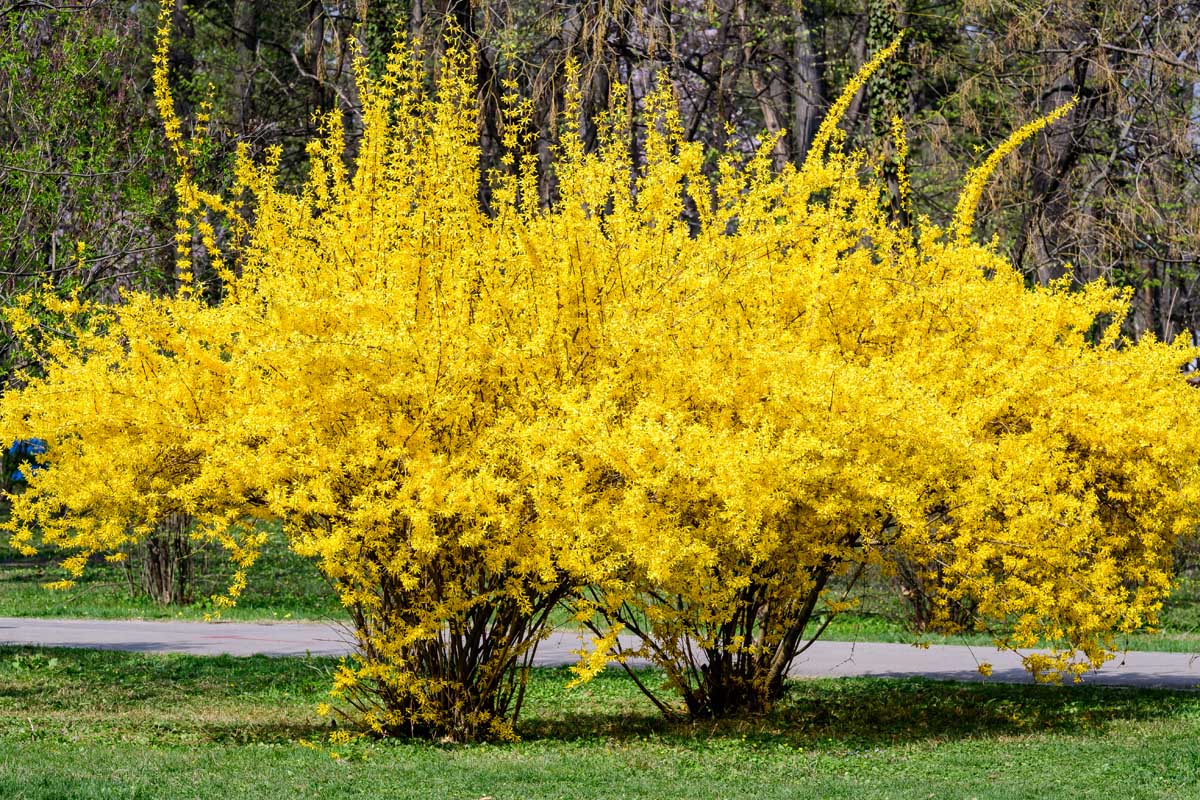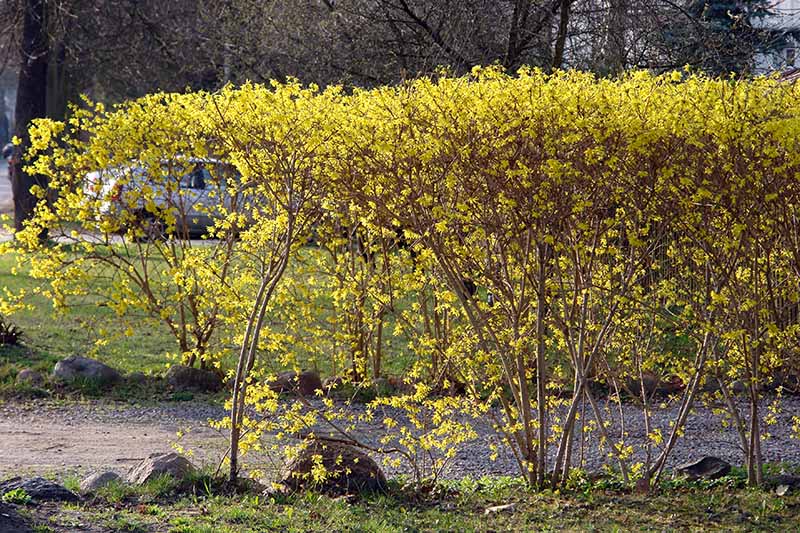Weeping Forsythia: The Early Spring Bloomer That Says
Weeping Forsythia: The Early Spring Bloomer That Says
Forsythia is a genus of deciduous shrubs that are known for their bright yellow flowers that bloom in early spring. There are many different species and cultivars of forsythia, but one of the most popular is weeping forsythia.
Weeping forsythia (Forsythia suspensa) is a large shrub that can grow up to 10 feet tall and 12 feet wide. It has long, arching branches that are covered in clusters of bright yellow flowers. The flowers bloom in early spring, typically in March or April.
Weeping forsythia is a very easy-care shrub. It is drought-tolerant and can tolerate a wide range of soil conditions. It is also relatively pest- and disease-free.
Weeping forsythia is a beautiful and versatile shrub that can be used in a variety of ways. It can be planted as a standalone specimen, used as a hedge, or incorporated into a mixed border. It is also a popular choice for bonsai.
In addition to its beauty, weeping forsythia also has symbolic meaning. In the language of flowers, forsythia represents new beginnings and hope. This makes it a perfect plant to plant in the spring, when the days are getting longer and the weather is starting to warm up.
Main Content
Here are some of the things that weeping forsythia says:
- New beginnings. Forsythia is one of the first shrubs to bloom in the spring, and its bright yellow flowers are a welcome sight after a long winter. They symbolize new beginnings and hope for the future.
- Anticipation. The sight of weeping forsythia in bloom is a reminder that spring is on the way. It is a time of anticipation and excitement, as we look forward to warmer weather and longer days.
- Joy. The bright yellow flowers of weeping forsythia are a source of joy. They bring a smile to our faces and make us feel happy.
- Hope. The symbolic meaning of forsythia is hope. Its bright yellow flowers are a reminder that even in the darkest of times, there is always hope for a better future.
Here are some tips for growing weeping forsythia:
- Choose a sunny location with well-drained soil.
- Water regularly, especially during the first year after planting.
- Fertilize once a year in the spring with a balanced fertilizer.
- Prune in late winter or early spring to remove dead or damaged branches.
Conclusion
Weeping forsythia is a beautiful and versatile shrub that is easy to care for. It is a perfect plant to add a splash of color to your garden in early spring. If you are looking for a plant that symbolizes new beginnings, hope, and joy, then weeping forsythia is a great choice.
Weeping forsythia is a beautiful and easy-to-care-for shrub that is sure to brighten up your springtime garden. With its cascading branches of bright yellow flowers, weeping forsythia is a sight to behold.
If you are thinking about adding weeping forsythia to your garden, I encourage you to visit Garden Wiki for more information. This website has a wealth of information about weeping forsythia, including its care requirements, planting instructions, and pest and disease control.
In addition to the website, you can also find weeping forsythia at many local nurseries. When choosing a weeping forsythia, be sure to select a plant that is healthy and well-established.
With proper care, weeping forsythia will thrive in your garden for many years to come. So what are you waiting for? Visit Garden Wiki today and learn more about this amazing shrub!
FAQ of weeping forsythia
1. What is weeping forsythia?
Weeping forsythia is a deciduous shrub that is known for its beautiful, cascading flowers. It is a member of the olive family and is native to China. The shrub typically grows to be 6-10 feet tall and wide, and it blooms in early spring with bright yellow flowers. Weeping forsythia is a popular choice for landscaping because it is easy to care for and it provides a welcome burst of color in the spring.
2. How tall does weeping forsythia grow?
Weeping forsythia typically grows to be 6-10 feet tall and wide. However, it can be pruned to be smaller or larger, depending on your preference.
3. How much sun does weeping forsythia need?
Weeping forsythia needs full sun to partial shade. It will bloom best in full sun, but it can tolerate some shade.
4. How do I care for weeping forsythia?
Weeping forsythia is a relatively easy plant to care for. It needs well-drained soil and regular watering. It is also a good idea to fertilize weeping forsythia in the spring.
5. What are some common problems with weeping forsythia?
The most common problems with weeping forsythia are pests and diseases. Aphids, scale, and whiteflies are common pests that can attack weeping forsythia. The most common diseases that affect weeping forsythia are powdery mildew and rust.
Image of weeping forsythia
- Weeping forsythia in full bloom. The bright yellow flowers cascade down the branches, creating a stunning display.

- Weeping forsythia in a pot. This compact plant is perfect for small gardens or patios.
- Weeping forsythia in a hedge. This weeping forsythia has been trained to form a hedge.

- Weeping forsythia in the fall. The leaves of weeping forsythia turn a beautiful golden yellow in the fall.

- Weeping forsythia in winter. The bare branches of weeping forsythia provide structure and interest in the winter garden.

Post a Comment for "Weeping Forsythia: The Early Spring Bloomer That Says"